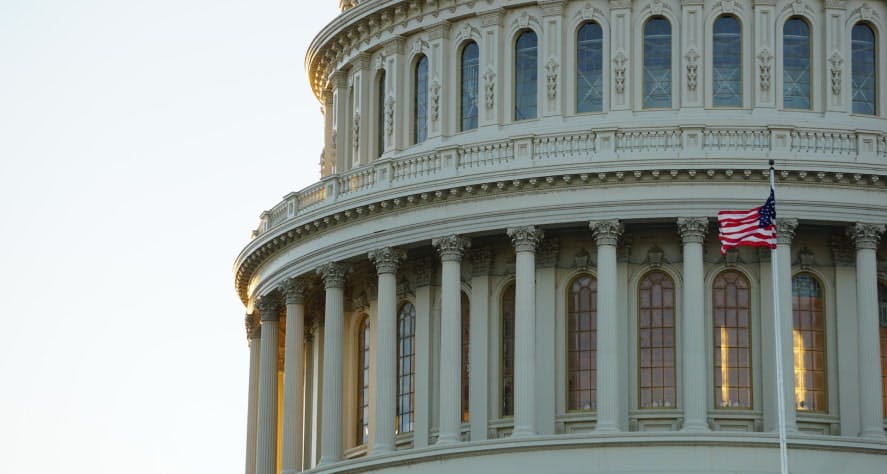
What are the 3 Pillars of Corporate Sustainability?
In this article, we'll explore what the 3 pillars of corporate responsibility are, why they're important, and how businesses can turn them into practical action.
ESG / CSR
Industries



Contrary to what you might think, the Green New Deal isn’t as new as you might think it is.
There are so many novel efforts being implemented for the United States to help fight against climate change, it can be hard to keep track of them all – such as the Green New Deal.
What is the Green New Deal, how long has the Green New Deal existed, and has it been successful in helping the U.S. to fight climate change so far?
In this article, we’ll break down everything you need to know about the Green New Deal – from its past, present, and future.
Alexandria Ocasio-Cortez, a Democratic representative known for assisting Bernie Sanders during his run for presidency in the 2016 election, proposed the Green New Deal and sparked conversation around it between 2018 and 2019 – but it never made it to the senate to be passed as an official piece of climate legislation.
👉 While the Green New Deal never made it to the senate, it is important to realize that the values depicted in the Green New Deal have inspired many other states to adopt its values in their own climate legislation.
However, Cortez isn’t the first to propose a plan such as the Green New Deal – with the United Nations having first coined the term for this kind of climate policy with their “Global Green New Deal” in 2008.
One of the hallmark elements of the Green New Deal is that it values tackling climate change and inequality at the same time, believing that the two are interconnected and cannot be solved without addressing both issues simultaneously.
For example, the current economy in the U.S. is not designed to help those below the poverty line – with the rich too busy polluting the planet and even getting paid for it while the poor are stuck with minimum wage jobs and struggle to pay for basic necessities such as food or their own healthcare.
Climate change only highlights the discrepancy between the social classes in our society, and reminds us that the system isn’t fit for handling climate crises such as droughts, floods, or hurricanes that leave vulnerable communities in financial peril.
Some of the other main goals of the Green New Deal include:
👉 The Green New Deal is ultimately determined to create a viable environment and economy that will better serve society in the long-run in order to prevent future challenges with climate change or inequality.
All of these goals will not only help the Green New Deal to aid those financially struggling to make ends meet, but will help to reduce air pollution, cut greenhouse gasses, and better yet – create millions of new jobs that can help financially support families moving forward.
In addition to this, these new jobs created in conjunction with the Green New Deal could help to provide better access to clean air, clean water, and ultimately cultivate greater climate resilience in our communities.
👉 Seeing as the two main goals of the Green New Deal are to address inequality and climate change, the new jobs created as a result of the Green New Deal would first go to working class families, people of color, and other minorities that have struggled due to a fossil fuel economy.
The Green New Deal doesn’t skimp short on its ideas on how to tackle both climate change and inequality.
Here are some concrete goals for the Green New Deal that would help reduce global emissions and fight against climate change:
The Green New Deal wouldn’t be an aimless plan. In fact, the Green Party has specified exactly how the Green New Deal would hit numeric goals to measure its success in fighting climate change.
According to the Green Party, the Green New Deal should do the following to ensure it reduces emissions:
Given these are lofty goals for one new deal alone, it’s fair to wonder – are these goals too ambitious for the Green New Deal alone?
👉 The Green New Deal would ultimately work by support communities over large corporations utilizing the use of fossil fuels.
The Green New Deal would work by building greater community resilience, supporting the transition to the use of clean energy, and improving water and air quality. The unique aspect about the Green New Deal is that each part of the massive plan to tackle climate change would not only help to reduce emissions, but also help low-income and vulnerable populations to thrive in our now fragile world.
For example, improving upon infrastructure would not only allow for buildings more equipped to handle climate change – but create new jobs for struggling families.
At the end of the day, how the Green New Deal would work can be summarized with one quote,

Even though the original Green New Deal never made it to the senate, the values of the Green New Deal have shown up in numerous other efforts by other states to tackle climate change.
Here are a few examples of the core principles and goals of the Green New Deal being executed in other climate change mitigation efforts in other states:
A state that many may not realize has made efforts in conjunction with the Green New Deal, Illinois has been successful in benefitting from the Future Energy Jobs Act – which helps to create thousands of new jobs in clean energy, reduce air pollution, and lower energy bills in the state every year. Even more so, the Future Energy Jobs Act prioritizes access for low-income households – striving to achieve one of the main goals of the Green New Deal.
Pittsburgh, the second largest city in Pennsylvania, has worked towards the Clean Rivers Campaign – which is dedicated towards developing various green infrastructure projects that can help to prevent vulnerable neighborhoods from suffering the consequences of natural disasters. Most notably, the Clean Rivers Campaign helps to mitigate the effects of flooding – often done by seeking to implement new pipes, more durable roads, and other infrastructure improvements. This helps to create jobs while also building climate resilience: a value depicted in the Green New Deal.
California hasn’t been shy on its dedication towards the environment, especially with the string of climate legislation the state passed last year. The state has illustrated its commitment to the values depicted in the Green New Deal as well, such as with the Buy Clean California Act – which works with the California Air Resources Board (CARB) to be more mindful of the materials and transportation used when engaging in construction projects to reduce greenhouse gas emissions. This helps to improve buildings to be more climate resilient while also taking care of vulnerable communities – similar to the Green New Deal.
👉 If the Green New Deal were to be passed in the U.S., these kinds of efforts and official acts would occur nationwide.

Even though the Green New Deal proposed by Alexandria Ocasio-Cortez didn’t make it to the Senate back in 2019, it doesn’t mean that the Green New Deal hasn’t been manifested or executed in different forms across the country since its initial proposal. Several states such as Massachusetts, New York, Rhode Island, and many more have made an individual effort in recent years to combat climate change.
Whether the Green New Deal will ever get its moment in the sun to become integrated across the United States as a whole remains a mystery, but its chances may be higher than ever – especially as the country begins to get more serious about meeting its climate targets, such as with the $369 billion dollar climate bill passed last year.
If reading this article about the Green New Deal has made you interested in reducing your carbon emissions to further fight against climate change – Greenly can help you!
It can be difficult to keep track of all the changes to come with climate change, such as the Green New Deal, but don’t worry – Greenly is here to help! Keep up to date with all of the ways climate change is having an impact on society by checking our legislation checker or by booking a demo for personalized updates and expertise on how climate news will impact your company.
Greenly can help you make an environmental change for the better, starting with a carbon footprint assessment to know how much carbon emissions your company produces.